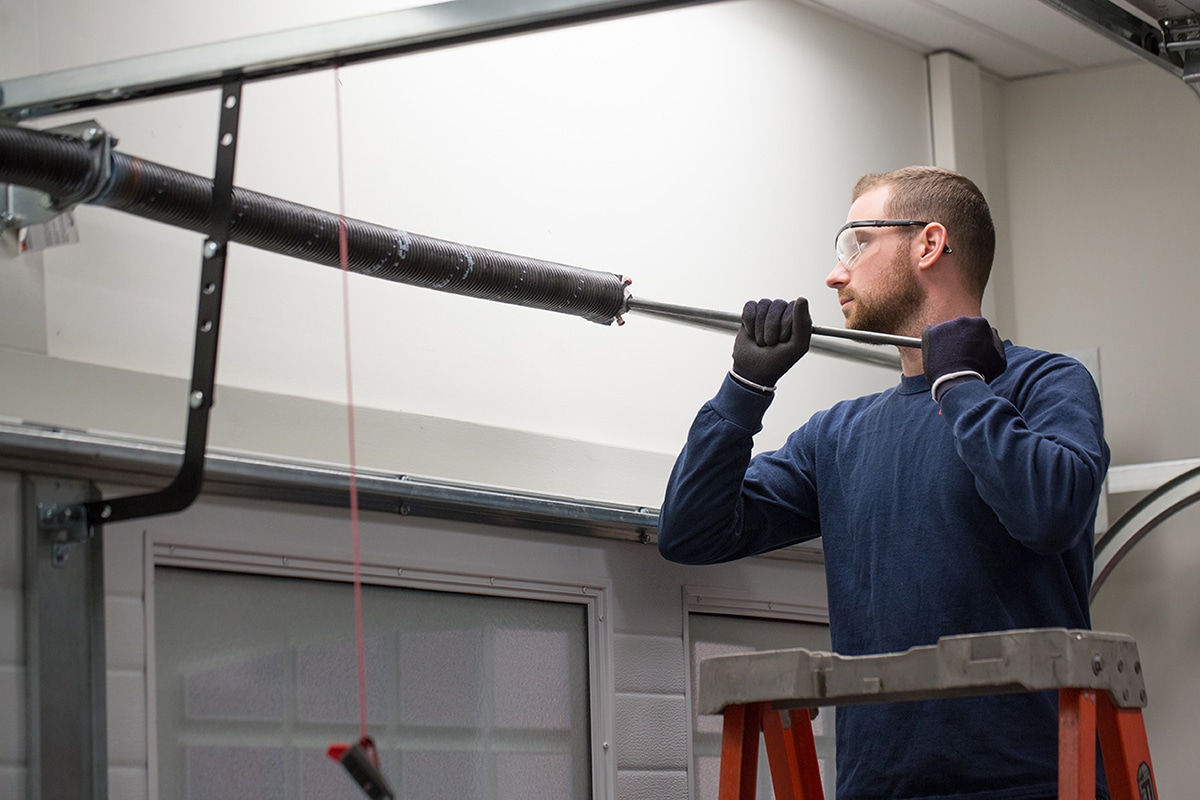Garage door springs, a vital component of the garage door system, often present numerous challenges to homeowners due to their complex nature. The two most prevalent types of garage door spring systems are Torsion and Extension systems. Each has its unique structure, operation mechanism and potential problems. Comprehending these differences is crucial for identifying issues accurately and implementing effective solutions promptly.
The subsequent discussion delves into common problems associated with Torsion and Extension springs, along with tips for effective maintenance and repair. By gaining awareness about these issues, individuals can ensure that their garage doors function optimally while enhancing safety measures in their homes.
The objective is not merely to address technicalities but also foster a sense of community among readers by sharing knowledge on shared experiences and practical solutions.
Key Takeaways
– Garage door springs are a vital component of the garage door system.
– Torsion and Extension systems are the two most prevalent types of garage door spring systems.
– Common problems with these systems include unusual noises during operation and difficulty in lifting the door manually.
– Regular maintenance can extend the lifespan of garage door springs and prevent costly repairs.
Identifying Issues with Torsion and Extension Systems
Diagnosing problems within torsion and extension systems of garage doors often requires meticulous observation, given the complex nature of these mechanisms and the array of issues that may arise.
The torsion system, usually found above the garage door, relies on tightly wound springs to counterbalance the weight of the door. A malfunctioning torsion spring can lead to a heavy door that’s hard to lift manually or an overworked automatic opener.
Similarly, extension systems use springs that extend along both sides of the track when the door is lowered. These springs also bear significant weight and are prone to wear and tear; a faulty extension spring may cause uneven opening or even an inability for the door to open at all.
In understanding these challenges, it becomes easier to pinpoint common problems affecting such systems. For example, one might notice unusual noises during operation—a sign indicating worn-out parts in need of replacement—or perhaps persistent difficulty in lifting the garage door manually despite repeated adjustments on tension settings—an indication of possible spring failure. It is essential not only to recognize these signs but also understand their underlying causes; this knowledge equips homeowners with insights necessary for effective troubleshooting before turning toward professional assistance.
The resolution process varies depending on whether it involves restoring functionality or replacing faulty components altogether. In cases where torsion springs are stretched beyond their operational capacity due to extreme weather fluctuations or prolonged use without adequate maintenance, a simple adjustment might restore optimal performance levels. However, if structural integrity has been compromised due to rust corrosion or physical damage (like bending), complete replacement becomes inevitable.
For extension springs exhibiting similar issues—overstretching leading to sagging or imbalance—the solution could involve either adjusting tension settings or installing new units entirely. The complexity inherent in these decisions underscores why careful diagnosis remains critical: employing targeted solutions based on precise identification ensures maximum longevity for your garage door system while minimizing unnecessary costs and disruptions associated with more extensive repairs.
Tips for Effective Maintenance and Repair
Implementing a regular maintenance routine for torsion and extension mechanisms can potentially extend their lifespan and prevent costly repairs, despite beliefs that such procedures may be time-consuming or unnecessary.
Regular inspection of the garage door springs, lubrication of moving parts, and timely replacement of worn-out components form an integral part of this maintenance regime. Adhering to this routine not only safeguards against surprise failures but also ensures optimal performance of the garage door system.
Visual Inspection: This involves checking the garage door springs for any signs of wear and tear such as rusting, fraying or stretching. Any irregularities could indicate impending failure which necessitates immediate attention.
Lubrication: To maintain smooth operation, it is recommended to regularly apply a high-quality lubricant to all moving parts including the springs. This mitigates friction between components thereby reducing wear.
Prompt Replacement: If during inspection any component appears excessively worn or damaged, prompt replacement is crucial to avoid further complications.
Effective maintenance goes beyond just ensuring functionality; it contributes significantly towards safety measures in residential settings by preventing accidents caused by sudden spring breakage or falling doors. Moreover, consistent upkeep sustains the aesthetic appeal of your property and fosters a sense of pride in homeownership.
The seemingly mundane task of maintaining your garage door becomes a reinforcing act that strengthens feelings of security and belonging within one’s home environment – an endeavor worth undertaking despite its apparent mundanity or effort involved.
https://perfectsolutionsgaragedoor.com/garage-door-springs-replacement-expert-tips-and-techniques/


